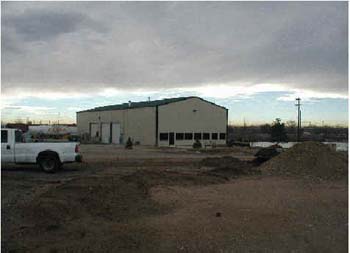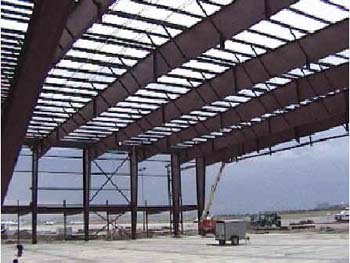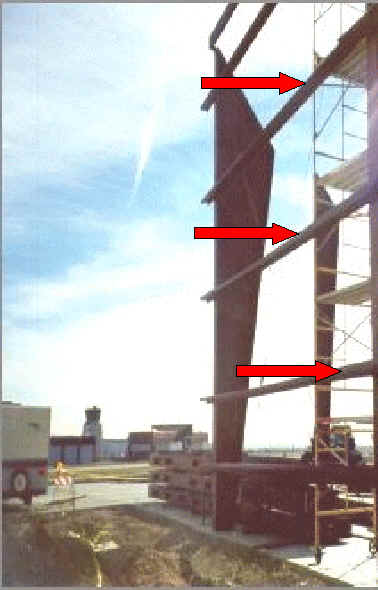Metal Buildings
1926.758 Systems-engineered metal buildings
 More than 50 percent of industrial buildings
in steel erection are systems-engineered. These metal structures use different types of steel members and a different erection process than typical steel erection. They also present certain unique hazards, such
as those associated with anchor bolts, construction loads, and double connections. More than 50 percent of industrial buildings
in steel erection are systems-engineered. These metal structures use different types of steel members and a different erection process than typical steel erection. They also present certain unique hazards, such
as those associated with anchor bolts, construction loads, and double connections.
 All of the requirements contained in Subpart R apply to systems-engineered metal buildings, except for 1926.755 (column anchorage) and 1926.757 (open web steel
joists) [1926.758(a)]. All of the requirements contained in Subpart R apply to systems-engineered metal buildings, except for 1926.755 (column anchorage) and 1926.757 (open web steel
joists) [1926.758(a)].
(Field-assembled building: See picture at right)
-
All structural columns must be anchored by at least four anchor bolts [1926.758(b)].
-
Rigid frames must have 50 percent of their bolts, or the number of bolts specified by the manufacturer (whichever is greater) installed and tightened on both sides of the web adjacent to each flange before the hoisting equipment is
released [1926.758(c)].
-
Construction loads are prohibited from:
-
being placed on any inadequately secured structural
steel framework [1926.758(d)],
and
-
being placed beyond any area 8 feet from the center-line of the primary support member [1926.758(i)].
-
When girts or eave struts share common connection holes [1926.758(e)]:
-
at least one bolt must remain securely in place for the connection of the first member;
-
a field-attached seat or similar connection device supplied by the manufacturer may be used in lieu of the bolt; and

- both ends of all cold-formed or steel joists must be fully bolted/welded to the support structure before [1926.758(f)]:
-
releasing the hoisting cables,
-
allowing an employee on the joists, or
-
allowing any construction loads on the joists.
-
Purlins and girts are prohibited from:
-
being used as an anchorage point for a fall-arrest system, unless written approval is obtained from a qualified
person [1926.758(g)];
-
being used as a walking/working surface when installing safety systems, until:
-
all permanent bridging is installed, and
-
fall protection is provided [1926.758(h)].
|
|
|
|
|
